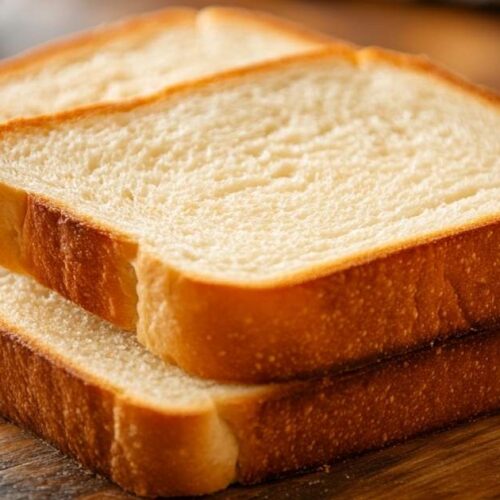
Sourdough Discard Sandwich Bread
Make the best sourdough discard sandwich bread that’s fluffy, flavorful, and perfect for zero-waste baking at home.
Ingredients
- Sourdough Discard (1 cup)
- All-Purpose Flour (3½ cups to 4 cups)
- Warm Water (¾ cup)
- Active Dry Yeast (1 teaspoon, optional)
- Granulated Sugar or Honey (2 tablespoons)
- Salt (1½ teaspoons)
- Butter or Oil (2 tablespoons, melted or softened)
Instructions
Prepare Your Workspace
- Begin by setting up a clean surface for kneading, and gather all your ingredients. Measuring your ingredients accurately ensures consistency in the final loaf. A kitchen scale is the most precise tool for this, but you can also use measuring cups if that’s what you have on hand.
Activate the Yeast (If Using)
- In a small bowl, combine your warm water with the teaspoon of active dry yeast.
- Add one teaspoon of sugar from the total amount you’ve measured out.
- Stir gently and let the mixture rest for about 5 minutes.
- Look for a light foam to form on top—this indicates the yeast is active. If you’re skipping the commercial yeast, you can just mix the discard with the water and move on to the next step.
Combine the Wet Ingredients
- In a large mixing bowl, whisk together the sourdough discard, the remaining sugar (or honey), and melted butter (or oil).
- If you used yeast, pour in the yeast mixture at this point.
- Stir until everything is well-combined. You can use a stand mixer with a dough hook or just work by hand.
Add the Dry Ingredients
- Begin adding the flour one cup at a time, stirring thoroughly after each addition.
- Add the salt to the bowl after you’ve added about half of the flour, mixing it in so it’s evenly distributed.
- Keep mixing until a shaggy dough starts to form.
- Tip: Depending on the consistency of your sourdough discard and the humidity of your kitchen, you may need slightly more or less flour. The goal is a dough that’s soft and only a little tacky, not overly sticky.
Kneading the Dough
- Once the dough comes together, turn it out onto a lightly floured surface.
- Knead by hand for about 8–10 minutes, or use the dough hook on your stand mixer for 5–7 minutes.
- Proper kneading develops the gluten, resulting in a structure that can trap gas bubbles and create a soft, airy loaf.
- Signs of Properly Kneaded Dough:- It should be smooth and elastic.- When you poke it gently, the dough should slowly bounce back.
First Rise (Bulk Fermentation)
- Shape the dough into a ball.
- Lightly grease a clean bowl with butter or oil.
- Place the dough in the bowl, cover it with a damp cloth or plastic wrap, and let it rest in a warm environment (around 75–80°F or 24–27°C) for about 1–2 hours.
- The dough should double in size during this time.
- If You Didn’t Use Commercial Yeast: The rising time could be longer, ranging from 3 to 4 hours or more, depending on how active your sourdough discard is. Be patient and keep an eye on the dough’s volume rather than strictly following a clock.
Shape the Loaf
- Once the dough has doubled, gently punch it down to release excess gas.
- Transfer it to a lightly floured surface and shape it into a rectangle roughly the width of your loaf pan.
- Roll it up tightly, pinch the seams, and place it seam-side down into a greased 9×5-inch loaf pan.
Second Rise (Proofing)
- Cover the pan with a damp cloth or plastic wrap.
- Allow the dough to rise again in a warm spot for 45 minutes to an hour, or until it has noticeably puffed up and is peeking just over the edge of the loaf pan.
Preheat and Bake
- About 20 minutes before the dough finishes its second rise, preheat your oven to 375°F (190°C).
- Place the loaf in the center of your preheated oven.
- Bake for 30–35 minutes or until the top is golden brown and the internal temperature reaches about 190–200°F (88–93°C).
- Optional: For an extra-buttery crust, you can brush the top with melted butter immediately after removing it from the oven.
Cool and Slice
- Carefully remove the bread from the loaf pan and place it on a wire rack to cool.
- Let it rest for at least 30 minutes to an hour before slicing. Cutting into hot bread can make the loaf gummy or collapse in the center.
Notes
Nutrition Information (Per Serving)
- Calories: ~150 kcal
- Total Fat: ~2g
- Saturated Fat: ~1g
- Protein: ~4g
- Carbohydrates: ~26g
- Fiber: ~1g
- Sodium: ~200mg